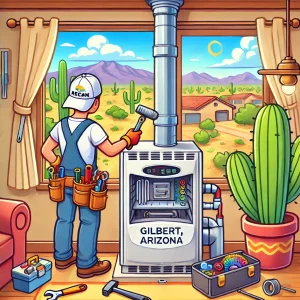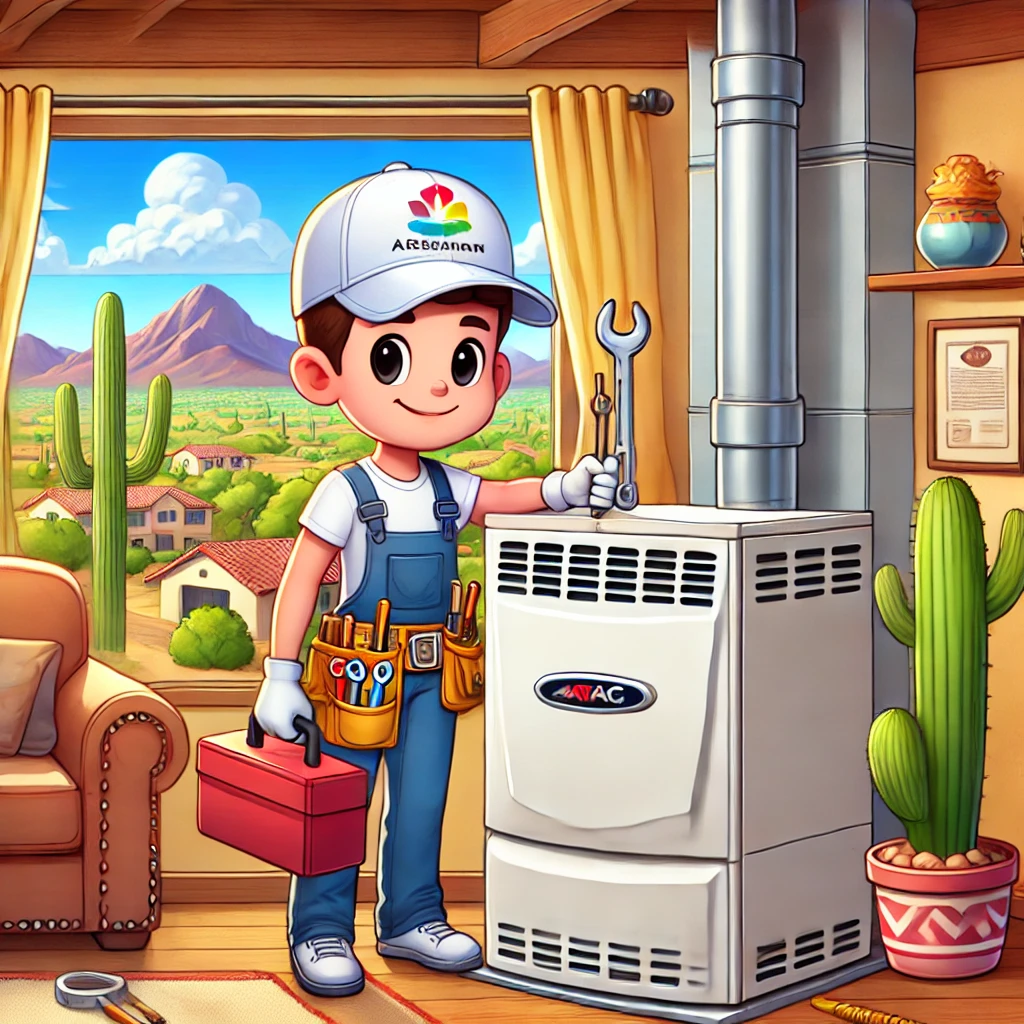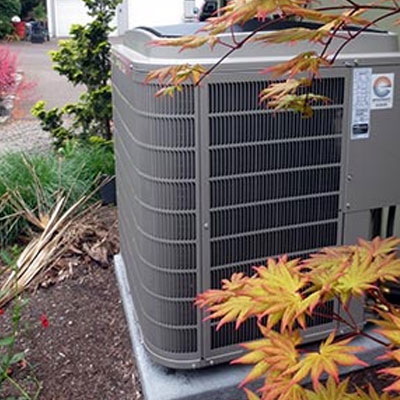How Much Does Furnace Repair Cost in Gilbert, Arizona?
If you’re wondering how much furnace repair costs in Gilbert, Arizona, you’re likely facing some chilly nights. The price to fix your furnace generally ranges between $150 and $500, depending on the issue at hand. That’s the straight answer you’re here for. Of course, like most things, there’s more to the story when it comes to costs, timeframes, and what influences these numbers.
Factors That Affect Furnace Repair Costs
A furnace repair bill isn’t a one-size-fits-all kind of deal. Several things can crank up or lower that price tag. First, the type of repair is crucial. A small fix, like replacing a filter, could cost you a couple of hundred bucks at most. On the flip side, more significant issues like blower motor replacements or heat exchanger repairs will cost more, easily tipping into the $500 range or beyond.
Let’s talk parts. The availability of replacement parts, particularly for older furnaces, can drive up the price. If you’re living in Morrison Ranch or closer to the Riparian Preserve, and you have an older furnace, getting parts might take time and cost more. Gilbert homes have grown rapidly in the last couple of decades, and if you’re living in newer areas like Val Vista Lakes, your furnace might still be under warranty, which can reduce costs considerably.
Additionally, the HVAC repair company you choose can affect the cost. Companies with a good reputation in Gilbert may charge a bit more for their HVAC repair services, but that little extra could save you a headache in the long run.
Time Involved in Furnace Repairs
How long is this going to take? Well, that depends on the problem. Minor repairs can often be completed in under an hour. If your furnace just needs a quick tweak or a part swapped out, you’ll be warm again before you know it. But if you’re dealing with a more significant problem, it might take longer.
For instance, a cracked heat exchanger or malfunctioning blower motor could take a full day’s work, sometimes more. Those who live closer to the Heritage District or near Agritopia, where homes tend to be more custom, may find that unique furnace systems require more labor, thus extending the time it takes to finish repairs.
Common Furnace Problems and Their Costs
Let’s dive into the specifics. Here are some of the more common furnace issues and what you might expect to pay:
Thermostat Issues: Sometimes, it’s not the furnace at all; it’s the thermostat. If your home near Freestone Park feels like a freezer, yet the thermostat seems unresponsive, replacing it might cost around $100 to $300.
Blower Motor Repairs: The blower motor keeps the air moving through your home. If it’s not working, expect costs to range from $300 to $500 for the part and labor.
Ignitor Replacement: If your furnace isn’t firing up, the ignitor might be to blame. This repair usually runs between $150 and $250, depending on your model.
Heat Exchanger Replacement: This is one of the priciest repairs, as a heat exchanger is a critical part of your furnace. This could set you back $500 to $1,200, depending on the model and labor needed. If you live in a larger home, like those in Seville or Power Ranch, the cost could lean toward the higher end.
Location and Gilbert-Specific Costs
Living in Gilbert has its perks—like the beautiful views of the San Tan Mountains and the relaxed, suburban vibe—but it also comes with some factors that can affect the cost of furnace repair. Gilbert’s weather isn’t harsh compared to Flagstaff, but winters can still get chilly. The demand for heating repair spikes during the colder months of December through February, so if your furnace breaks down during that time, expect to pay a premium due to higher demand.
If you’re lucky enough to live near Downtown Gilbert, with its historic charm and local hotspots, you might get faster service since you’re closer to several HVAC companies. However, if you’re further out near the Santan Village area or along Higley Road, you might experience slight delays in service and potentially higher costs due to the distance HVAC professionals need to travel.
Should You Repair or Replace?
This is the million-dollar question. If your furnace is more than 15 years old and the repair cost is more than half the price of a new unit, it might be time to consider replacement instead. A brand-new furnace typically runs between $2,500 and $7,500, depending on the size of your home and the system you choose. So if your furnace is breaking down regularly and the bills are piling up, replacing it might save you cash in the long run.
If you’re on the fence, a good rule of thumb is to weigh the repair costs against the age and efficiency of your current furnace. Folks in neighborhoods like the Islands or Spectrum may be dealing with slightly older homes and systems. If you’re constantly having to repair your furnace, investing in a new one could give you peace of mind, not to mention better energy efficiency and lower bills.
 DIY Furnace Repairs: A Good Idea?
DIY Furnace Repairs: A Good Idea?
We get it—saving money is tempting. But before you start poking around your furnace with a wrench, think twice. Some minor repairs, like changing a dirty filter or adjusting the thermostat, can be done yourself. However, most furnace problems require a professional touch. Gilbert’s dry winters might not seem harsh, but the last thing you want is a half-functioning furnace in the middle of a cold spell. Plus, messing around with gas lines or electrical components is not something you want to DIY unless you’ve got the proper expertise.
How to Avoid Expensive Repairs
As the old saying goes, an ounce of prevention is worth a pound of cure. Regular maintenance is key to avoiding costly repairs down the line. Scheduling a yearly check-up with a professional can help identify potential issues before they become expensive problems. Many HVAC companies around Gilbert offer seasonal maintenance plans that include system checks, filter changes, and minor adjustments. This can save you hundreds in repair bills and keep your furnace running efficiently, especially if you live in areas with bigger homes like Layton Lakes or Adora Trails.
Keeping your furnace happy isn’t rocket science—just stay on top of maintenance, don’t ignore small problems, and when repairs are needed, act fast. That’s the best way to avoid having to shell out for major repairs or even a replacement down the road.
Furnace repair costs in Gilbert, Arizona, can vary widely depending on the specific issue, the time it takes to fix it, and where you live. For minor repairs, you might only be out $150 to $300. But for more significant problems, like replacing a blower motor or heat exchanger, you could face a bill of $500 or more. Keeping up with regular maintenance is the easiest way to avoid hefty repair costs and ensure your furnace runs smoothly year after year. And hey, whether you’re in the friendly streets of Agritopia or near the scenic views of Morrison Ranch, staying warm in winter is something we can all appreciate.…



 Essential Maintenance Tips for Portland Homeowners
Essential Maintenance Tips for Portland Homeowners